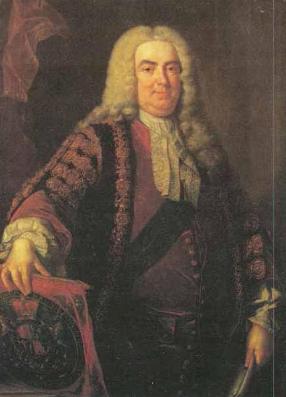poj3126Prime Path (BFS+素数筛)
素数筛:需要一个数组进行标记
最小的素数2,所有是2的倍数的数都是合数,对合数进行标记,然后找大于2的第一个非标记的数(肯定是素数),将其倍数进行标记,如此反复,若是找n以内的所有素数,只需要对[2,n^0.5]进行循环即可,因为n以内的所有数如果不是[2,n^0.5]的倍数,则一定是素数。复杂度:O(nloglogn);
for(int i=2;i*i<=n;i++){
if(a[i]!=-1)
for(int k=i*i;k<=n;k+=i)
a[i]=-1;
}
poj3126题目链接:http://poj.org/problem?id=3126
素数筛所占用的空间较大,毕竟是需要数组进行标记的,如果n太大就不可以做出(内存超出)。
若是让求[a,b]内的素数,a<b<=1e12,b-a<=1e6; 这个如果直接用素数筛是内存超出,可以先用一个数组存储[0,b^0.5]的素数,再用这些素数筛选[a,b],注意令一个数组表示[a,b]的素数,不能让下标直接表示这个数字(>=a&&<=b),而是开一个数组,c[i]表示a+i是否是素数。
Description
 The ministers of the cabinet were quite upset by the message from the Chief of Security stating that they would all have to change the four-digit room numbers on their offices.
The ministers of the cabinet were quite upset by the message from the Chief of Security stating that they would all have to change the four-digit room numbers on their offices. — It is a matter of security to change such things every now and then, to keep the enemy in the dark.
— But look, I have chosen my number 1033 for good reasons. I am the Prime minister, you know!
— I know, so therefore your new number 8179 is also a prime. You will just have to paste four new digits over the four old ones on your office door.
— No, it’s not that simple. Suppose that I change the first digit to an 8, then the number will read 8033 which is not a prime!
— I see, being the prime minister you cannot stand having a non-prime number on your door even for a few seconds.
— Correct! So I must invent a scheme for going from 1033 to 8179 by a path of prime numbers where only one digit is changed from one prime to the next prime.
Now, the minister of finance, who had been eavesdropping, intervened.
— No unnecessary expenditure, please! I happen to know that the price of a digit is one pound.
— Hmm, in that case I need a computer program to minimize the cost. You don't know some very cheap software gurus, do you?
— In fact, I do. You see, there is this programming contest going on... Help the prime minister to find the cheapest prime path between any two given four-digit primes! The first digit must be nonzero, of course. Here is a solution in the case above.
1033The cost of this solution is 6 pounds. Note that the digit 1 which got pasted over in step 2 can not be reused in the last step – a new 1 must be purchased.
1733
3733
3739
3779
8779
8179
Input
Output
Sample Input
3 1033 8179 1373 8017 1033 1033
Sample Output
6 7 0
现附上AC代码:
#include<iostream>
#include<cstdio>
#include<queue>
#include<cmath>
using namespace std;
const int maxn=1e4+5;
int main(){
int T,num[4],temp;cin>>T;
int plu[maxn];
while(T--){
for(int i=0;i<=maxn;i++)
plu[i]=0;
for(int i=2;i*i<=maxn;i++){
for(int j=i*i;j<=maxn;j+=i){
plu[j]=-1;
}
}
int x,y;scanf("%d%d",&x,&y);
queue<int >q;
q.push(x);
plu[x]=1;//注意这一步的重要性,没有这一步的话,可能会导致 plu[temp]=plu[t]+1;当plu[t]==0时就执行了,
while(!q.empty()&&plu[y]==0){
int m=q.front(),t=q.front(); q.pop();
for(int i=3;i>=0;i--)
num[i]=m%10,m/=10;
for(int j=0;j<4;j++){
int mm=num[j],i;
if(j==0) i=1;
else i=0;
for(;i<=9;i++){
num[j]=i;
temp=num[0]*1000+num[1]*100+num[2]*10+num[3];
if(plu[temp]==0) {
plu[temp]=plu[t]+1;
q.push(temp);
}
}
num[j]=mm;
}
}
// printf("%d %d %d %d %d %d %d\n",plu[1033],plu[1733],plu[3733],plu[3739],plu[3779],plu[8779],plu[8179]);
if(plu[y]==-1) printf("Impossible\n");
else printf("%d\n",plu[y]-1);
}
return 0;
}
这道题是要求最小步骤到达目标,就是一个变形的最短路问题。对于最短路问题,肯定是首选BFS,而我们首先对x进行,个位十位百位千位的遍历,若新生成的数是素数(且之前没有访问过,毕竟是求最短路,若之前已经到过,则再到肯定不是最短,便剪枝),则将其放进队列。最后得出plu[y]基本就可以知道答案了。
回过头来一想,发现的确是很简单,但之前却wrong answer了很多次,自己都对自己无语了。
作者:孙建钊
出处:http://www.cnblogs.com/sunjianzhao/
本文版权归作者和博客园共有,欢迎转载,但未经作者同意必须保留此段声明,且在文章页面明显位置给出原文连接,否则保留追究法律责任的权利。


